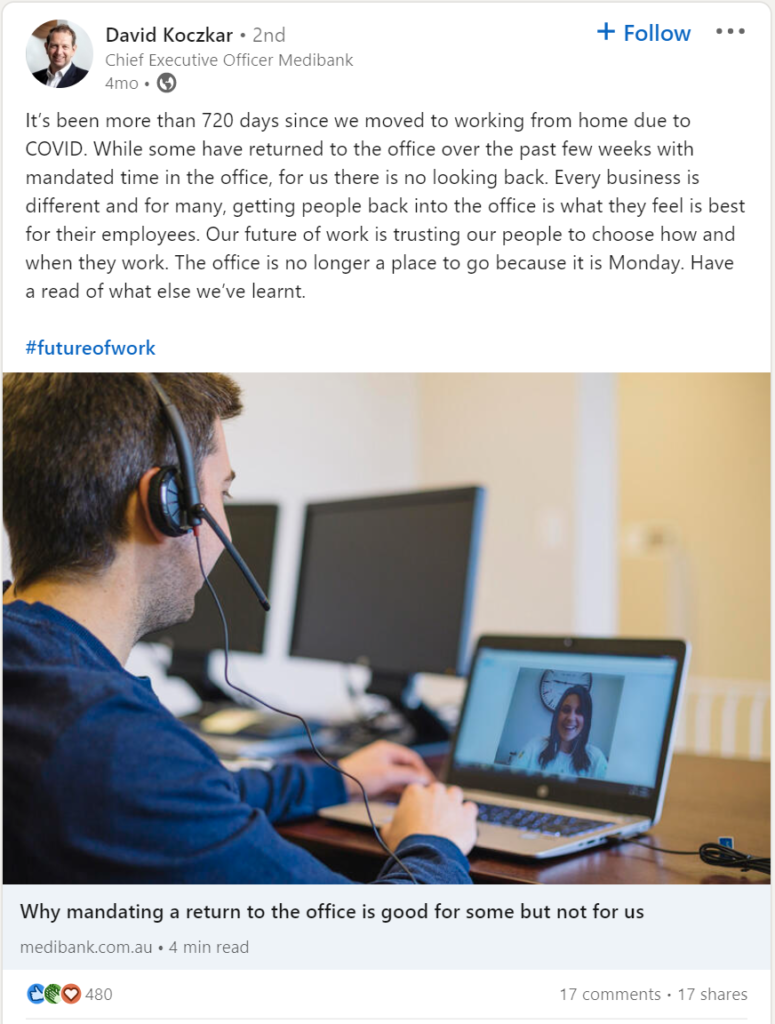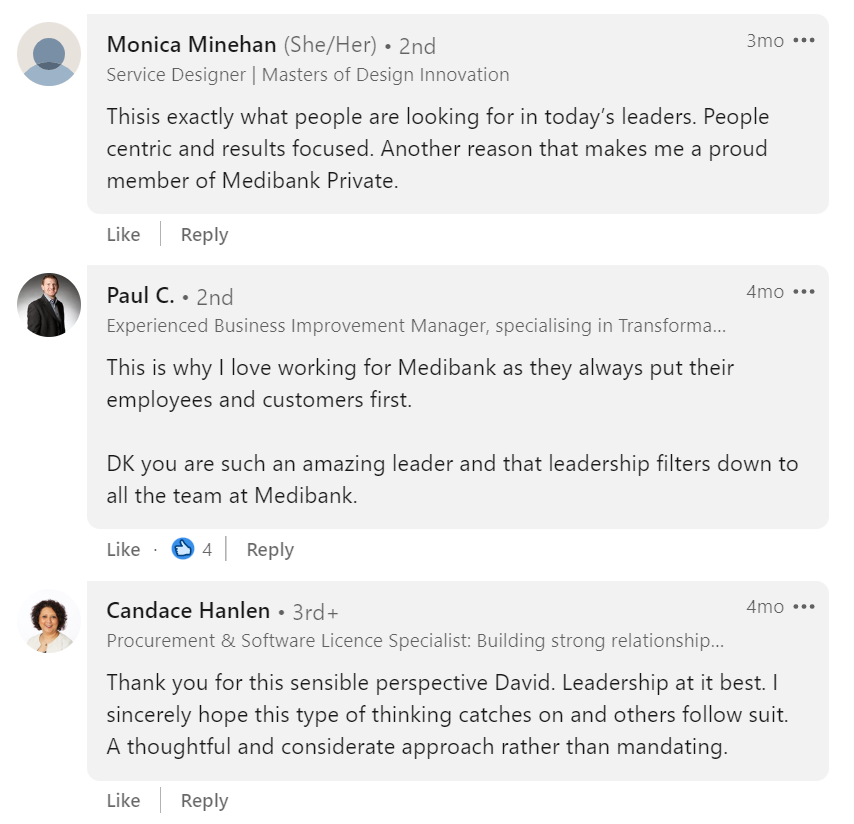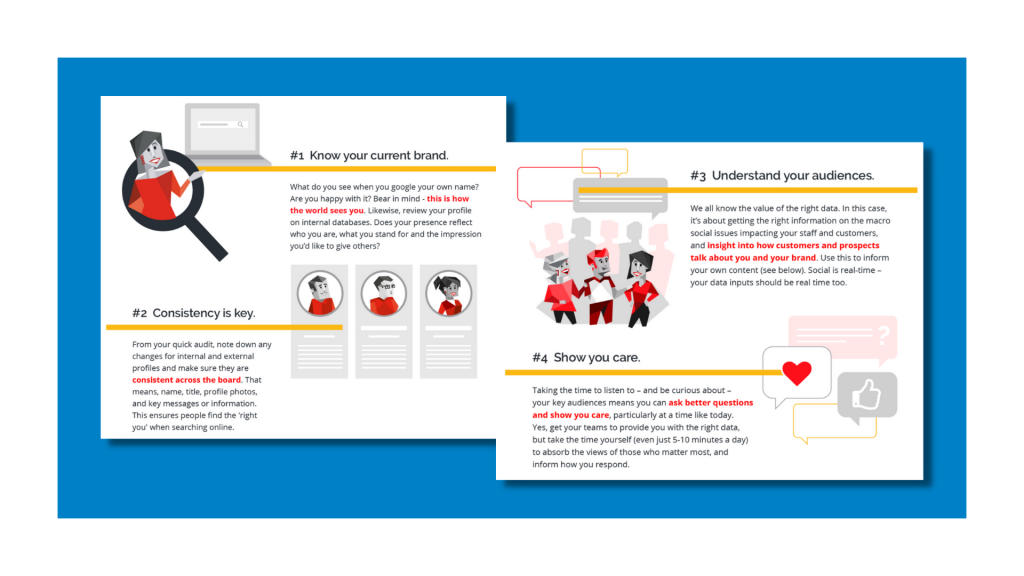In this episode, we’re looking at the question of internal or external social media; one I know many leaders and comms advisers grapple with given the increasing demands on their time to communicate across multiple channels.
Recently I had a chat with an advisor in a major bank who, having spent a lot of time focusing on the internal world of social media, was wondering if that effort should be extended to her leader’s LinkedIn profile? And, if so, what were the benefits AND where do they start?
It’s a question leaders and advisors in our increasingly digital world continue to ponder: internal or external social media? Where should leaders focus their efforts? Does one give you more bang for your buck? And what does the best strategy look like for leaders who are keen to protect and enhance their digital reputation?
Fortunately I roped in an expert to help us tackle these big questions. It was an absolute pleasure to have the co-founder and CEO of SWOOP Analytics, Cai Kjaer on the Your Digital Reputation podcast. For those who aren’t familiar with SWOOP, it’s a leading enterprise collaboration analytics platform that uses data from tools like Microsoft 365, Teams, Yammer and Workplace from Meta to help organisations around the globe collaborate better. And, as such, Cai knows a fair bit about what makes leaders thrive and succeed online.
At a glance, here’s what we covered in our chat. It’s well worth a listen!
- Where leaders should be investing their time and effort: internal or external social media;
- What stands out as leadership best practice on platforms like Yammer, Workplace and Teams and what impact can good leaders have based on SWOOP’s analysis;
- Cai’s view on the role internal structures play and how teams can work most effectively together so leaders aren’t managing social media domains in a silo;
- Examples where leaders merged internal and external efforts: Why did they do it, what did they discover, and what were the benefits?
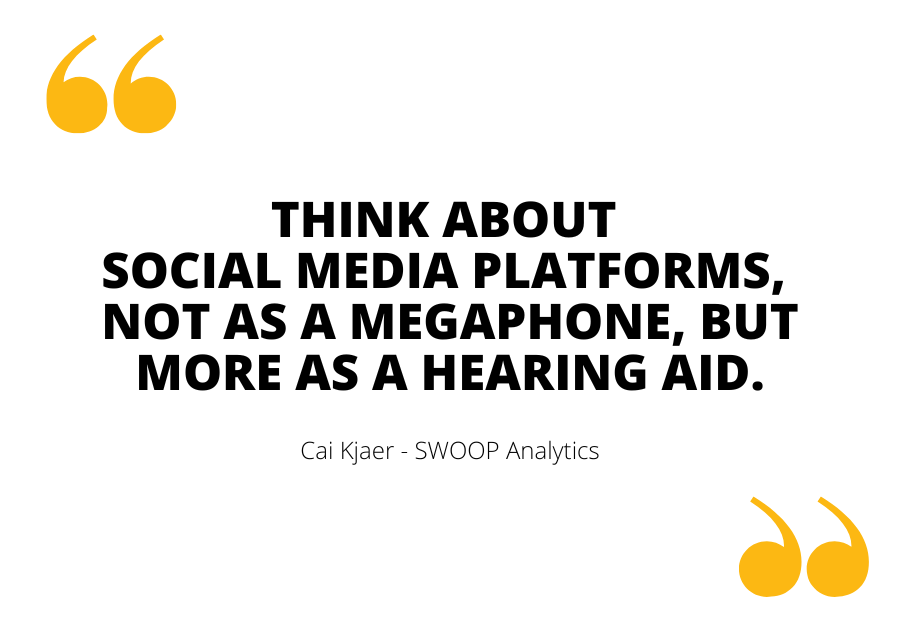
A quick snapshot. The insights + advice.
Roger Christie: Cai, I know you do a lot of work with organisations around this new normal that we’re adjusting to. In your opinion, how have things changed as a result of COVID? How much extra effort do leaders need to be putting into both internal and external communication as a result?
Cai Kjaer: Before the pandemic, the office was the place where a lot of culture was being built – the place where leaders had the opportunity to engage with staff. The office is now nothing like what it was before. So what do you do if you are an executive who is used to doing face to face town halls, bringing people together, having frequent contact and managing by walking around?
How do you do that when you walk around and there’s no one there? Or if they’re only there two days a week? The question now is how do we communicate effectively? How do we keep our people engaged if we can’t rely on face to face to the extent that we did before. And I think that’s where the internal social channels are now even more important than they were before the pandemic. We have to find a way of communicating at scale internally as well, externally.
Roger Christie: As a leader, you’re almost forced into this environment aren’t you? And therefore what sort of extra pressure does that put on not just leaders, but on the communication or reputation advisors that are helping them to adjust, adapt and maintain profile relevance and connection with their workforces at this time?
Cai Kjaer: Well, it’s changing the dynamics, isn’t it? I chatted to the local MD of a global pharmaceutical a couple of weeks ago. He was saying that during the pandemic they did what most organisations have done – they had very frequent interactions. They really dialled up the internal comms. And of course, since everyone was working from home, it had to be done digitally. And people loved that frequent interaction.
As we are starting to get back to work, this particular executive had been told by staff, “We don’t see you as much as we did during the pandemic”. And he replied, “I’m in the office. I’m here. I’m traveling. I’m meeting customers. I’m in team meetings? What do you mean you don’t see me as much as you did before?”
You can see how the perception by people is that we saw you more before because the live updates and Q&A’s etc. gave a much broader proportion of people the ability to engage and interact with executives. We all know that face-to-face interactions are preferable, where you can generate the highest level of trust. There’s nothing like the human interaction face-to-face to establish trust and authenticity but the problem is that we can’t do that. It doesn’t scale. I think this new workplace reality will force internal comms advisors to change their perspective on the balance between face-to-face and communicating digitally online.
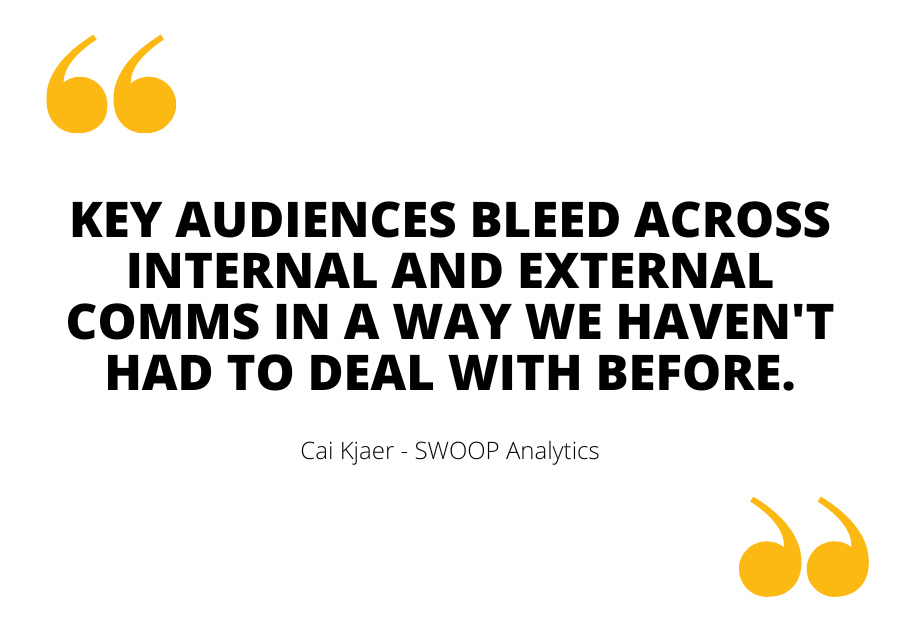
Digital leadership in practice.
Cai Kjaer: Organisations that do this really well are very good at starting conversations. They think about these platforms, not as a megaphone, but more as a hearing aid. I’ve stolen this hearing aid megaphone analogy from one of my industry colleagues, Carrie Basham Young in the US. I love that it gives you the picture in your mind about not telling but about talking.
Roger Christie: I feel like there’s almost a legacy attitude that certain conversations should be had behind closed doors, certain conversations are appropriate for the external world. Do you have examples where leaders have taken a message traditionally delivered internally and decided this will have greater scale, greater impact if also amplified externally?
Cai Kjaer: I saw recently for instance, Australian health insurance company, Medibank involved heavily in conversations around should we return to the office or should we have a hybrid work environment? The Medibank CEO, David Koczkar posted a blog post saying what it might be OK for some organisations to return to the office – but not for us.
And it also was posted on LinkedIn. When I read this, I thought this is of course a message to staff about how strongly Medibank leaders feel about not forcing people into the office, but I think they can also see that that’s a very important message to send to future talent – particularly now that we are definitely in a time where there’s a labour shortage.
By putting that out there, Medibank is saying to potential future employees, you should come and join us because unlike others you might have considered joining, we are not going to force you to come to the office. Actually, if you join our company, we will offer leadership development, training opportunities to everyone, wherever they are – not just to those that are within commuting distance of one of our major centres. Having a stakeholder view, not a platform view, of communications is incredibly powerful.
Roger Christie: The example raises a somewhat provocative question around this topic that we’re talking about – this idea of internal and external. We’ve almost drawn this arbitrary line between them but you’re right, what we’re talking about here is taking a stakeholder view.
Cai Kjaer: It’s not that something is an internal message or something is an external message. Even an internal message can resonate with both staff and prospective candidates. This talks to structure – how organisations are structured today. Are they set up for success around internal and external comms? It’s this idea that we’re really talking about today – it’s not this or that platform. It all comes down to key audiences and the messages they need to hear. These bleed across internal and external in a way that we haven’t had to deal with before.
Roger Christie: The wonderful example you gave earlier of the MD who was less visible when suddenly work returned to normal – it’s that kind of thinking, it’s those kind of examples and analogies that bring this to life.
Internal or external social media? Cai’s final takeaway.
Cai Kjaer: Do you have to do it? Yes. And you have to do it because the world is now digital. Because we live in a world of hybrid, remote work. Because people aren’t in the offices. So where you had to do digital before because that’s where your audience was, that is what’s happening with your internal audience as well.
You can’t rely on having a Microsoft teams call because not everyone can log into the same meeting, at the same time. If you are global, people are working different schedules, you have to be digital. So it’s not a question of time or a nice to have – it is a question of survival. That may be me taking it too far but it’s right up there. It’s up there along with critical things you have to master.
To listen to this in full, head to Apple Podcasts, Spotify or wherever you get your podcasts.
Please subscribe, leave a review or drop Roger Christie a note with any thoughts from this conversation – we’d love to hear from you.
You can hear more from Cai by following him on LinkedIn. Learn more about SWOOP Analytics by visiting their blog here.
Keen to learn more?
Read more from Cai here as we continue to unpack the value of both internal and external social media for leaders and businesses. Here you can read through more examples from leaders getting this right to help you on your own journey. We’ve also summarised 10 simple-but-important steps to get you going in an easy to digest infographic (see snapshot below). Head over to SWOOP Analytics to access the infographic in full. And last but not least, SWOOP has got you covered with Digital Brand Audit for Leaders to further understand where you and your team can focus to build a holistic and effective digital brand.

